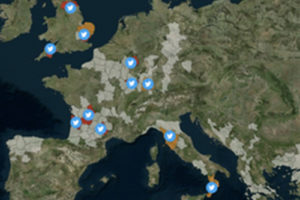New open-source software that decrypts social media messages to help manage risks and disasters

The European Commission’s new algorithm developed by the Joint Research Centre (JRC) can segment social media messages to identify, verify and help manage disaster events -such as floods, fires or earthquakes- in real-time.
Suppose you are an emergency responder and you see a social media post showing an unusable road in a place not covered by traditional news. Suppose you see a similar message from several accounts. Wouldn’t you wonder if they were referring to the same event or whether that area was worth a more detailed analysis with a satellite image?
It was with this in mind that scientists from the JRC helped deal with the 2021 Haiti Earthquake by using social media data analysis to complement the assessment of impacts in the immediate aftermath of the earthquake.
This experience was the first real case usage of a software platform that can scan millions of social media texts and images per day for situational awareness and impact assessment. This information is collected, filtered and geocoded automatically and in real-time using machine learning (artificial intelligence) models.
A software that helps responders with flood risk management
The first goal of this platform was to provide an additional geospatial layer in the European Flood Awareness System (EFASSearch for available translations of the preceding linkEN•••) and the Global Flood Awareness System (GloFAS). These two online systems offer flood forecasts based on model simulations which are crucial to the Copernicus Emergency Management Services Managed by JRC.
The monitoring ability of these early warning systems is mostly anchored in satellite images and numerical models.The integration of this new social media for disaster risk management (SMDRM) software will allow them to assess the likelihood and impacts of a flood event with even greater accuracy.
An open-source tool available to all researchers and technicians
The new layer for EFASSearch for available translations of the preceding linkEN••• and GloFAS is the first product developed using the SMDRM software. Nonetheless, since the software has been released as open-source -free and open to all technicians linked to crisis response who want to leverage it- the scientists expect it to have a wider use and they remain available for collaboration.
The SMDRM software can be adapted for different scales and label relevant images for floods, storms, earthquakes and fires, resulting in valuable information for reports or descriptions of the situation on the ground or in the vicinity.
Technicians or researchers working on map development can use the code to find more data to improve or confirm their findings and complement information extracted from traditional sensors or earth observation sources.
Software that connects citizens to disaster risk management
The SMDRM software data help confirm whether an event is happening and where exactly the most affected locations are.
It is a clear example of how social media and active citizenship can contribute to disaster risk management as it help crisis responders improve their situational awareness in the immediate aftermath of an event.

